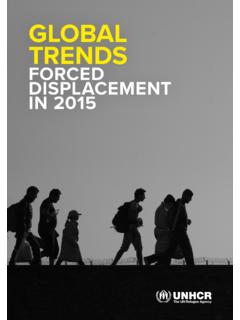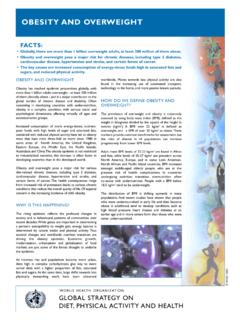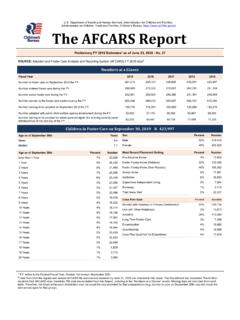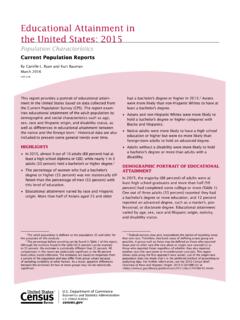Transcription of Long-term Trends in Diabetes
1 Long-term Trends in Diabetes April 2017 CDC s Division of Diabetes Translation. United States Diabetes Surveillance System available at Data Source and Methodology Number and percentage of the population with diagnosed Diabetes wer e obtained from the National Health Interview Survey (NHIS, available at ) of the National Center for Health Statistics (NCHS), Centers for Diseas e Control and Prevention (CDC). Conducted continuously since 1957, the NHIS is a health survey of the civilian, noninstitutionalized population of the United States.
2 The survey provides information on the health of the United States population, including information on the prevalence and incidence of disease, the extent of disability, and the use of health care services. The multistage probability design of the survey has been described ,3,4 Estimates for years 1958 1979 were obtained from published data,5 and estimates fro m 1980 forward were derived directly from the NHIS survey data . Because Diabetes questi ons wer e not included in the survey for s ome years before 1980, the estimates wer e missing for these years.
3 References: This slide shows the trend in diagnosed Diabetes in the United States from 1958 through 2015. The prevalence of diagnosed Diabetes increased from in 1958 to in 2015. In 2015, million people had diagnosed Diabetes , compared to only million in 1958. How the trend has changed was described in detail elsewhere1. 1. Geiss LS, Wang J, Cheng YJ. Thompson TJ, Barker L ; Li Y, Albright AL, GreggEW. Prevalence and incidence Trends for diagnosed Diabetes among adults aged 20 to79 years, United States, 1980-2012. JAMA 2014; 312 Massey JT, Moore TF, Parsons VL, Tadros W.
4 Design and estimation for theNational Health Interview Survey, 1985 1994. Hyattsville, MD: National Center forHealth Statistics. Vital and Health Statistics 1989;2(110).3. Botman SL, Moore TF, Moriarity CL, Parsons VL. Design and estimation for theNational Health Interview Survey, 1995 2004. National Center for Health and Health Statistics 2000;2(130).4. Parsons VL, Moriarity C, Jonas K, et al. Design and estimation for the NationalHealth Interview Survey, 2006 2015. National Center for Health Statistics. VitalHealth Stat Vital and Health Statistics 2014; 2(165).
5 5. Harris MI: Prevalence of noninsulin-dependent Diabetes and impaired glucosetolerance. Chapter VI In: Diabetes in America, Harris MI, Hamman RF, eds. NIHpubl. no. 85-1468, Data for the Graph Number and Percentage of Population with Diagnosed Diabetes 1958 2015 Year Percentage Number (in millions) 1958 1959 1960 1961 1962 1963 1964 1965 1966 1967 1968 1969 1970 1971 1972 1973 1974 1975 1976 1977 1978 1979 1980 1981 1982 1983 1984 1985 1986 1987 1988 1989 1990 1991 1992 1993 1994 1995 1996 1997 1998 1999 2000 2001 2002 2003 2004 2005 2006 2007 2008 2009 2010 2011 2012 2013 2014 Note.
6 Data not available. 2015















